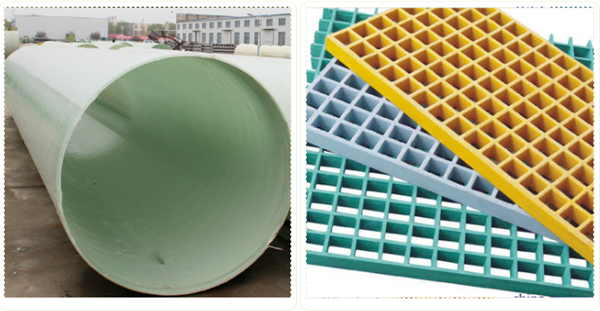Wide variety of fiberglass products
Fiberglass is an extremely fine inorganic non-metallic material. Glass fiber is a kind of natural inorganic non-metallic ore such as leucolite, pyrophyllite, kaolin, quartz sand, limestone, etc. High-grade inorganic fibers have a single filament diameter of a few microns to more than 20 microns, which is equivalent to 1/20-1/5 of a hair.
There are many types of glass fiber, which are suitable for different scenarios. Glass fiber can be divided into different types according to the composition, such as non-alkali, medium-alkali, high-alkali, high-strength, boron-free and non-alkali, etc. The performance is different, and it is used in different fields according to its performance characteristics. For example, glass fibers with an alkali metal oxide content of less than 0.8% are alkali-free glass fibers, which have good electrical insulation and mechanical properties, but poor acid resistance, so they are widely used in scenes that require electrical insulation or in FRP; The content of 11.9%-16.4% belongs to medium-alkali glass fiber, which has strong acid resistance but poor electrical performance, and its mechanical strength is lower than that of non-alkali glass fiber. It is used abroad for reinforced asphalt roofing materials with lower mechanical strength requirements; High-strength glass fiber contains a certain amount of zirconia, which has the characteristics of high tensile strength, low output and high cost, so it is mainly used in military products; in addition, high-alkali fiber has poor performance and has basically been eliminated.
Fiberglass Composite
Glass fiber can also be combined with other materials to make glass fiber composite materials, of which FRP is the main product. Glass fiber can be synthesized with resin to make glass fiber reinforced plastic (FRP), or add asphalt to make glass fiber reinforced asphalt. Due to the large variety of materials that can be composited, there is currently no clear classification of glass fiber composite materials. According to the data of Qianzhan Industry Research Institute, FRP accounts for about 75% of the market for glass fiber composite materials and products, occupying a dominant position. Therefore, we take FRP as an example to analyze the performance advantages of glass fiber composites.
FRP is an alternative material with excellent comprehensive performance. FRP is a composite material with synthetic resin as the matrix and glass fiber and fiberglass products (mat, cloth, belt, etc.) as the reinforcing material. FRP gets its name from its glass-like appearance and steel-like tensile strength. Compared with the most common steel in construction, the density of steel is 7.85×103kg/m3, and the density of FRP is 1.9×103kg/m3, which is lighter than steel, and its specific strength and corrosion resistance far exceed steel; compared with aluminum alloy , the thermal conductivity of aluminum alloy is 203.5W/m.℃, and the thermal conductivity of FRP is 0.3W/m.℃. The thermal insulation performance of FRP is better, and the service life of FRP is 50 years, which is twice that of aluminum alloy. Due to its excellent comprehensive performance, FRP, as a substitute for traditional materials, is widely used in construction, railways, aerospace, yacht berthing and other industries.
Glass fiber industry chain
The upstream raw materials of glass fiber are easy to obtain, and the downstream applications are relatively extensive. The raw materials for glass fiber production are mainly mineral raw materials and chemical raw materials, including pyrophyllite, kaolin, quartz sand, limestone, etc., which are minerals with large reserves in China, and it is relatively difficult to obtain; the energy used is mainly electricity and natural gas; downstream applications It is relatively extensive, mainly including building materials, transportation, electronic appliances, industrial equipment, energy and environmental protection and other fields.
Glass fibre market demand
From a macro perspective, it is expected that the ratio of my country’s glass fiber demand growth rate to GDP growth rate will remain at a relatively high level in the short term. It is estimated that my country’s glass fiber consumption in 22/23 years will be 5.34 million tons and 6 million tons, an increase of 13.2% and 12.5% respectively.
Considering the wide application of glass fiber, domestic macroeconomic indicators still have guiding significance for judging domestic glass fiber demand. In view of: 1) the per capita annual consumption of glass fiber is much lower than that of developed countries; 2) the penetration rate of glass fiber in the main fields of glass fiber application, such as construction and automobile, is far lower than that of developed countries, and as a new material Guided by policy promotion, we believe that the ratio of my country’s glass fiber demand growth rate to GDP growth rate will remain at a relatively high level in the short term, and it is expected to gradually move closer to a mature market in the medium and long term.
It is expected that the ratio of my country’s glass fiber demand growth rate to GDP growth rate will remain at a relatively high level in the short term. Under the neutral scenario assumption, it is estimated that the ratio of glass fiber demand growth rate to GDP growth rate in 22/23 years will be 2.4 and 2.4 respectively, corresponding to glass fiber. The growth rate of fiber demand was 13.2% and 12.5% respectively, and the glass fiber consumption was 5.34 and 6 million tons respectively.
#fiberglass #glass fiber
Post time: Apr-13-2023

